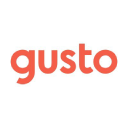How I Started A $8K/Month Home Organizing Service
Hello! Who are you and what business did you start?
My name is Sarah Giller Nelson and I am organized. I experience a sense of calm when I walk into well-ordered spaces. I enjoy feeling unencumbered. Knowing how to sift through, sort out, and organize all the “stuff” a household needs comes naturally to me and is a skill that I draw upon all the time.
Since founding Less is More Organizing Services in 2010, I have shown thousands of families how less clutter, stress, and discord will lead to more time, balance, and happiness. My team of organizers and I help overwhelmed people find time, clarity, and a sense of accomplishment.
My expertise has led to TV, radio, and press interviews in local and national publications. I love to give talks about getting organized. Most recently, I was featured in Real Simple Magazine and named one of Miami's top "closet concierges" by Modern Luxury Miami.
I currently have a staff of three professional organizers operating in two states. We serve on average 95 households per year. About 85% of our clients are repeat customers, buying 10 hours or more of organizing services. Typically, they hire us to work on one space, like a closet or...

Download the report and join our email newsletter packed with business ideas and money-making opportunities, backed by real-life case studies.

Download the report and join our email newsletter packed with business ideas and money-making opportunities, backed by real-life case studies.

Download the report and join our email newsletter packed with business ideas and money-making opportunities, backed by real-life case studies.

Download the report and join our email newsletter packed with business ideas and money-making opportunities, backed by real-life case studies.

Download the report and join our email newsletter packed with business ideas and money-making opportunities, backed by real-life case studies.

Download the report and join our email newsletter packed with business ideas and money-making opportunities, backed by real-life case studies.

Download the report and join our email newsletter packed with business ideas and money-making opportunities, backed by real-life case studies.

Download the report and join our email newsletter packed with business ideas and money-making opportunities, backed by real-life case studies.















